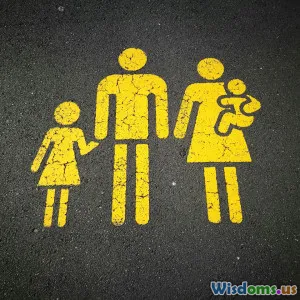
How Smart City Planning Can Fight Urban Homelessness
9 min read Exploring innovative smart city strategies that address urban homelessness with data-driven solutions, affordable housing, and integrated social services. (0 Reviews)
How Smart City Planning Can Fight Urban Homelessness
Urban homelessness is a persistent challenge confronting metropolises worldwide. According to the 2023 Annual Homeless Assessment Report (AHAR) by HUD, over 580,000 people experienced homelessness in the United States on any single night. The causes are multifaceted, from economic inequality to lack of affordable housing and insufficient social services. However, forward-thinking cities are embracing the concept of smart city planning to tackle homelessness more effectively.
Smart city planning integrates advanced technologies, urban design principles, and community-driven policies to create inclusive, resilient urban environments. This article explores how such planning can mitigate homelessness through strategic interventions rooted in data, innovation, and human-centered approaches.
Understanding the Nexus: Urban Homelessness and City Planning
Homelessness is not merely a social issue but deeply intertwined with how cities grow and allocate resources. Rapid urbanization often strains affordable housing supplies and disenfranchises vulnerable populations. Traditional interventions—like shelters and emergency aid—while essential, provide temporary relief without addressing root causes.
Smart city planning reimagines the urban ecosystem by leveraging technology such as IoT sensors, big data analytics, and participatory platforms. These tools help city authorities pinpoint homelessness hotspots dynamically and allocate resources more efficiently. According to the 2022 report by the National League of Cities, cities using real-time data platforms reported a 15% increase in service coordination for homeless populations.
Building Affordable and Supportive Housing Through Smart Design
One of the most effective long-term solutions is increasing the availability of affordable, supportive housing. Smart city planning can optimize land use to incorporate mixed-income housing developments close to public transit and essential services.
Case Study: Vienna's Social Housing Model
Vienna, often regarded as a global benchmark for social housing, has incorporated smart urban planning principles that encourage integrated communities. By investing in durable, energy-efficient affordable housing units throughout the city, they prevented the spatial segregation of low-income residents. This approach directly contributed to their remarkably low homelessness rates—reported at under 0.1% by the Austrian Federal Ministry for Social Affairs in 2022.
Innovative Construction Technologies
Smart city initiatives also embrace modular construction and 3D-printed homes to rapidly increase affordable housing stock. For example, cities like Austin, Texas, have piloted prefabricated housing units with embedded smart sensors tracking occupancy and maintenance needs. This results in reduced construction time and better management, enabling faster transitions from homelessness to housing.
Leveraging Data Analytics for Efficient Resource Allocation
Urban data platforms equipped with real-time analytics empower city officials to understand homelessness patterns, seasonal trends, and service gaps more precisely.
The Role of Predictive Analytics
By analyzing historical data on factors such as unemployment, eviction rates, and weather conditions, predictive models can forecast spikes in homelessness risk. For instance, Los Angeles Homeless Services Authority (LAHSA) uses data-driven insights to allocate outreach teams proactively, which improved engagement rates by 22% within two years.
Integrated Case Management Systems
Smart city technologies enable social workers, health providers, and housing agencies to collaborate through unified digital platforms. This ensures coordinated care tailored to individual needs, preventing service duplication. Boston’s CityScore dashboard epitomizes this integration, providing centralized metrics that track progress in housing placements, mental health support, and employment programs.
Enhancing Public Spaces to Support Vulnerable Populations
Beyond shelter and services, smart urban design can create inclusive public spaces that provide safety, accessibility, and dignity.
Designing with Empathy
In cities like Copenhagen, benches are designed with armrests that discourage long-duration sleeping, but smart outreach teams frequent these areas to provide assistance, balancing urban aesthetics with social support.
Conversely, Portland's Smart City project includes heated bus shelters equipped with solar panels, free Wi-Fi, and emergency call buttons. These innovations improve the quality of life for un-housed residents while fostering community integration.
Light and Surveillance
Smart lighting systems using motion sensors increase safety without being intrusive. Surveillance cameras connected to emergency services ensure rapid response while protecting privacy by using blurred or anonymized feeds unless incidents occur.
Encouraging Multi-sector Collaboration and Citizen Engagement
Combating homelessness demands cooperation across government agencies, private sector stakeholders, nonprofits, and community members.
Participatory Platforms
Smart city frameworks increasingly include citizen reporting apps where residents can flag concerns regarding homelessness or suggest improvements. For example, Seattle’s "City Steps" app enables users to report tent encampments, enabling outreach teams to respond quickly with resources.
Public-Private Partnerships
Technology companies partner with municipalities to deploy solutions such as digital kiosks offering information on nearby shelters, employment opportunities, and social services. In New York City, LinkNYC kiosks serve millions daily and have been adapted with homelessness resource menus integrated.
Legislative Support
Successfully combating homelessness also requires policy alignment. Places like Vancouver have enforced inclusionary zoning laws mandating affordable housing in new developments. Smart city data aids policymakers by demonstrating impacts and guiding adjustments.
Challenges and Ethical Considerations
While smart city planning offers promise, it is vital to address privacy concerns, data security, and potential biases.
-
Data Privacy: Sensitive information about homeless individuals must be protected from misuse. Adopting stringent data governance frameworks is essential.
-
Digital Divide: Not all homeless people have access to smartphones or the internet. Solutions must consider offline strategies.
-
Human Dignity: Technology should augment—not replace—compassionate human interactions.
Cities must implement transparent policies and involve those experiencing homelessness in decision-making to ensure ethical inclusivity.
Conclusion: Charting a Compassionate, Data-Driven Path Forward
Homelessness is a multifaceted crisis requiring innovative, coordinated responses. Smart city planning, blending technology, empathetic urban design, and community collaboration, offers a transformative approach to reducing homelessness sustainably.
By harnessing data to optimize services, building thoughtful affordable housing, and designing public spaces that dignify all inhabitants, cities can create environments where no one is left behind. Citizens, policymakers, and stakeholders must engage actively to implement these solutions collectively.
The promise of smart cities lies not just in advancing technology but in fostering resilient, caring communities that ensure safe shelter and opportunity for all urban residents. Cities taking bold steps to integrate smart planning into homelessness strategies illuminate a hopeful path forward—for their most vulnerable citizens and society at large.
References:
- U.S. Department of Housing and Urban Development. 2023 Annual Homeless Assessment Report.
- National League of Cities. 2022 Urban Data Report.
- Austrian Federal Ministry for Social Affairs, 2022 Housing Statistics.
- Los Angeles Homeless Services Authority (LAHSA) Reports, 2021–2023.
- Boston CityScore Dashboard.
- Copenhagen and Portland Smart City Initiatives.
- Seattle “City Steps” App Documentation.
- LinkNYC Kiosk Program.
Rate the Post
User Reviews
Popular Posts


















